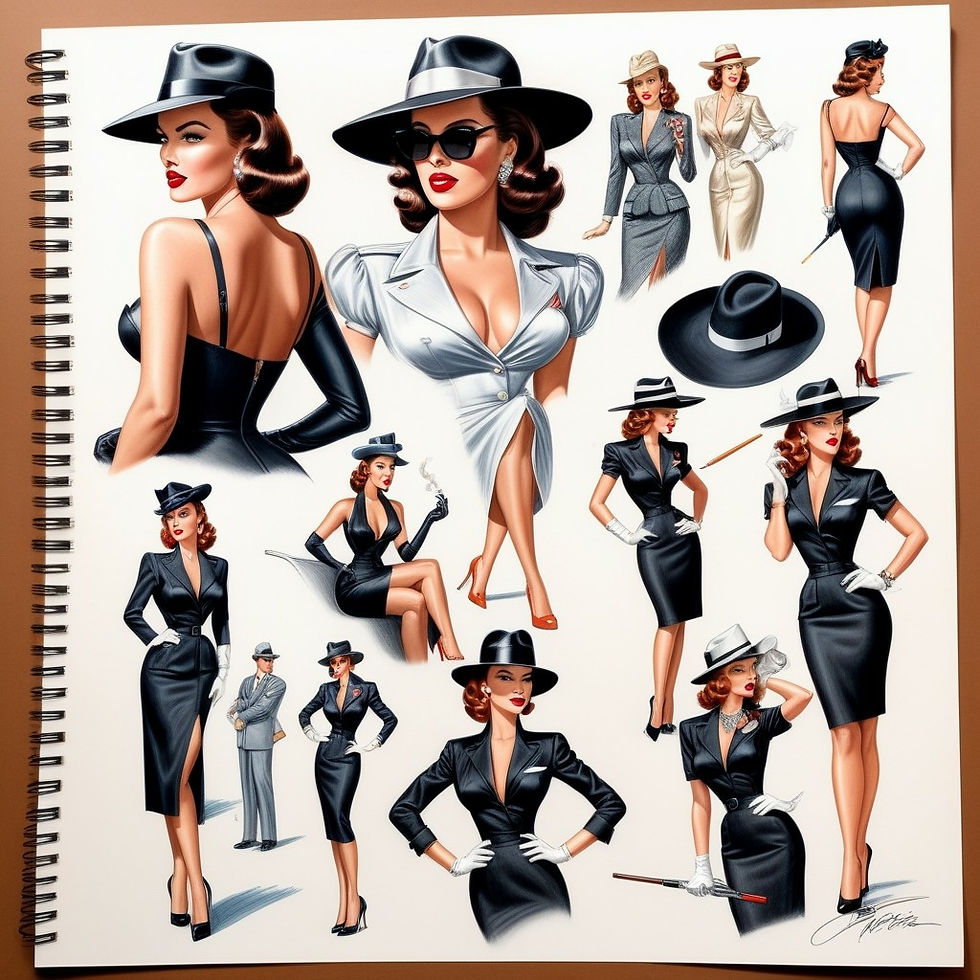The Femme Fatale in Film Noir and Beyond: Dieselpunk Fashion & Style 1
- DieselHQ

- Nov 15, 2023
- 3 min read
The femme fatale is a captivating character archetype that has appeared in various forms of literature and media, from ancient myths to modern films. She is typically portrayed as a beautiful, seductive woman who uses her charms to manipulate, deceive, or destroy the men who fall for her. She often represents a threat to the social order, challenging the norms and expectations of gender roles and sexuality.

One of the most influential and popular genres that featured the femme fatale was film noir, a style of crime drama that emerged in the 1940s and 1950s in Hollywood. Film noir was influenced by the hard-boiled detective fiction of the 1920s and 1930s, which often depicted cynical, disillusioned heroes and femme fatales as their antagonists or love interests. Film noir also reflected the social and cultural anxieties of the post-war era, such as the rise of urban crime, the fear of communism, and the changing status of women in society.

In film noir, the femme fatale is usually the main source of conflict and intrigue for the male protagonist, who is either a private investigator, a police officer, or a criminal. She lures him into a web of lies, betrayal, and murder, often for her own personal gain or survival. Some of the most iconic examples of femme fatales in film noir are Phyllis Dietrichson in Double Indemnity (1944), Kathie Moffat in Out of the Past (1947), and Brigid O'Shaughnessy in The Maltese Falcon (1941).

However, the femme fatale is not a monolithic or static character type. She has evolved and diversified over time, adapting to different genres, contexts, and audiences. One of the genres that has explored the femme fatale in new and creative ways is Dieselpunk, a subgenre of science fiction that combines the aesthetics and technology of the interwar period (1918-1939) with elements of fantasy, horror, or alternative history. Dieselpunk is often inspired by pulp fiction, a term that refers to the cheap, mass-produced magazines that published sensational stories of adventure, romance, and crime in the early 20th century.

In Dieselpunk, the femme fatale is not only a dangerous woman, but also a powerful and resourceful one. She may be a spy, a rebel, a scientist, or a leader, who uses her intelligence, skills, and charisma to achieve her goals, whether they are noble or nefarious. She may also have supernatural abilities, such as magic, psychic powers, or vampirism, that make her even more formidable and mysterious. Some of the examples of femme fatales in dieselpunk are Lady Mechanika in the comic series of the same name, Elizabeth Bathory in the novel The Bloody Red Baron (1995), and Selene in the film series Underworld (2003-2016).

The femme fatale is a fascinating and complex character that has captivated and challenged audiences for centuries. She is a reflection of the fears and desires of the society and culture that creates her, as well as a source of inspiration and empowerment for the women and men who identify with her. She is a symbol of the dark side of human nature, but also of the potential for freedom and independence. She is, in short, a timeless and universal archetype that will continue to intrigue and entertain us in the future.

For hints & tips on how to create the femme fatale Dieselpunk fashion & style look, follow my blog posts on www.dieseltopia.com



%20(2)_edited_edited.png)




Comentarios